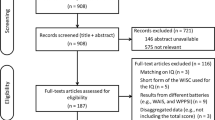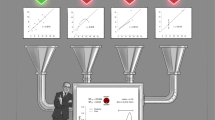Abstract
The influence of personal opinions and biases on scientific conclusions is a threat to the advancement of knowledge. Expertise and experience does not render one immune to this temptation. In this work, one of the founding fathers of statistics, Karl Pearson, is used as an illustration of how even the most talented among us can produce misleading results when inferences are made without caution or reference to potential bias and other analysis limitations. A study performed by Pearson on British Jewish schoolchildren is examined in light of ethical and professional statistical practice. The methodology used and inferences made by Pearson and his coauthor are sometimes questionable and offer insight into how Pearson’s support of eugenics and his own British nationalism could have potentially influenced his often careless and far-fetched inferences. A short background into Pearson’s work and beliefs is provided, along with an in-depth examination of the authors’ overall experimental design and statistical practices. In addition, portions of the study regarding intelligence and tuberculosis are discussed in more detail, along with historical reactions to their work.

Similar content being viewed by others
References
ASA [American Statistical Association]. (1999). Ethical guidelines for statistical practice. http://www.amstat.org/about/ethicalguidelines.cfm. Accessed July 1 2012.
Bernstein, E. (1927). The mentality of the Jewish child (p. 14). UK: The Jewish Chronicle.
Brill, M. (1936). Studies of Jewish and non-Jewish intelligence. Journal of Educational Psychology, 27(5), 331–352.
Dainow, S. H. (1922). Handicap to yiddish-speaking children (p. 17). UK: The Jewish Chronicle.
Davies, M., & Hughes, A. G. (1927). An investigation into the comparative intelligence and attainments of Jewish and non-Jewish school children. British Journal of Psychology, 18(2), 134–146.
Eisenhart, C. (1974). Karl Pearson. In C. C. Gillispie (Ed.), Dictionary of scientific biography (pp. 447–473). NewYork: Scribner.
Feldman, W. (1926). Alien immigration into great Britain. British Medical Journal, 1(3395), 166–167.
Fisher, R. A. (1936). The use of multiple measurements in taxonomic problems. Annals of Eugenics, 7(2), 179–188.
Holmes, S. J. (1926). Annals of eugenics: A journal for the scientific study of racial problems. Science, 63(1626), 232–233.
Holmes, C. (1995). Jewish economic and refugee migrations, 1880–1950. In R. Cohen (Ed.), The Cambridge survey of world migration (pp. 148–153). Cambridge: University Press.
Hooton, E. A. (1926a). Methods of racial analysis. Science, 63(1621), 75–81.
Hooton, E. A. (1926b). Review: Annals of eugenics. A journal for the scientific study of racial problems by Karl Pearson. American Anthropologist, 28, 551–553.
Keely, C. B. (1971). Effects of the immigration act of 1965 on selected population characteristics of immigrants to the United States. Demography, 8(2), 157–169.
Levy, S. (1923). Children of Jewish immigrants (p. viii). UK: The Jewish Chronicle.
Levy, D. M. (2004). Statistical prejudice: From eugenics to immigrants. European Journal of Political Economy, 20, 5–22.
MacKenzie, D. (1979). Karl Pearson and the professional middle class. Annals of Science, 36(2), 125–143.
Norton, B. J. (1978). Karl Pearson and statistics: The social origins of scientific innovation. Social Studies of Science, 8(1), 3–34.
Pearson, E. S. (1938). Karl Pearson: An appreciation of some aspects of his life and work. Biometrika, 28(3), 193–257.
Pearson, K., & Moul, M. (1925a). The problem of alien immigration into Great Britain, illustrated by an examination of Russian and Polish Jewish children: Part I. Annals of Eugenics, 1(1), 5–54.
Pearson, K., & Moul, M. (1925b). The problem of alien immigration into Great Britain, illustrated by an examination of Russian and Polish Jewish children: Part II. Annals of Eugenics, 1(2), 56–127.
Pearson, K., & Moul, M. (1925c). Foreward. Annals of Eugenics, 1(1), 1–4.
Plackett, R. L. (1983). Karl Pearson and the chi squared test. International Statistical Review, 51(1), 59–72.
Porter, T. M. (2004). Karl Pearson: The scientific life in a statistical age. Princeton, NJ: Princeton University Press.
Problems of Jewish education (1922). The Jewish Chronicle, p. 18.
R Development Core Team (2011), R: A Language and environment for statistical computing. Vienna, Austria. ISBN 3-900051-07-0; URL http://www.R-project.org/.
Schaffer, G. (2008). Assets or ‘aliens’? race science and the analysis of Jewish intelligence in inter-war Britain. Patterns of Prejudice, 42(2), 191–207.
Semmel, B. (1958). Karl Pearson: Socialist and darwinist. The British Journal of Sociology, 9(2), 111–125.
Spiers, E. I. (1922). Dotted with flaws (p. 30). UK: The Jewish Chronicle.
Stigler, S. M. (1999). Statistics on the table. Cambridge, MA: Harvard University Press.
The Alien Jewish Child (1922, May 12). The Jewish Chronicle, p 15.
Walker, H. M. (1958). The contributions of Karl Pearson. Journal of the American Statistical Association, 53(281), 11–22.
Weiss, K. M., & Lambert, B. W. (2011). When the time seems ripe: Eugenics, the annals, and the subtle persistence of typological thinking. Annals of Human Genetics, 75, 334–343.
Author information
Authors and Affiliations
Corresponding author
Rights and permissions
About this article
Cite this article
Delzell, D.A.P., Poliak, C.D. Karl Pearson and Eugenics: Personal Opinions and Scientific Rigor. Sci Eng Ethics 19, 1057–1070 (2013). https://doi.org/10.1007/s11948-012-9415-2
Received:
Accepted:
Published:
Issue Date:
DOI: https://doi.org/10.1007/s11948-012-9415-2




